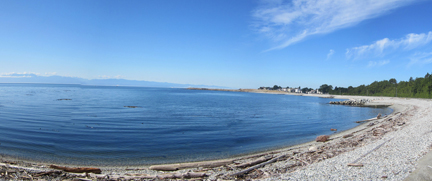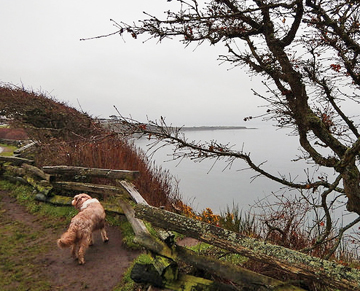
Clover Point, site of one of Victoria’s primary sewage screening facilities, from across Ross Bay. Photo © Blake Handley, via Creative Commons and flickr
The new sewage-treatment schedule that the Capital Regional District proposed earlier this month contains tight deadlines.
In order for this latest development to pan out, proponents for building a secondary treatment plant in the region must determine a new timeline and acquire all approvals and a site for the treatment plant by this time next year.
At stake is an $83.4 million grant from PPP Canada for a facility to handle material removed from liquid sewage.
Project opponents may see the extension as yet one more year to cause delay.
Of course, if the CRD or either group of municipalities that is exploring sewage-treatment options doesn’t meet the March 2016 conditions, the larger initiative will churn on. Two other federal grants, worth $170 million, and the province’s contributions have roomier deadlines that may accommodate the region’s revised forecast for completion by 2023.
Delay, in fact, may result in better sewage treatment options. For example, researchers announced this January that they had identified and successfully extracted appreciable amounts of rare metals from biosolid samples collected from cities across the U.S. Their study focused on 13 high-value minerals, including gold, silver, copper, iridium, and platinum. Extrapolating their results, the researchers estimate $16 million dollars worth of metals could be accumulating every year in the sewage of a city with one million residents.
Of that, the researchers say almost $3.5 million could come from gold and silver alone….
Read the rest of this editorial at the Victoria Times Colonist….



You must be logged in to leave a reply.